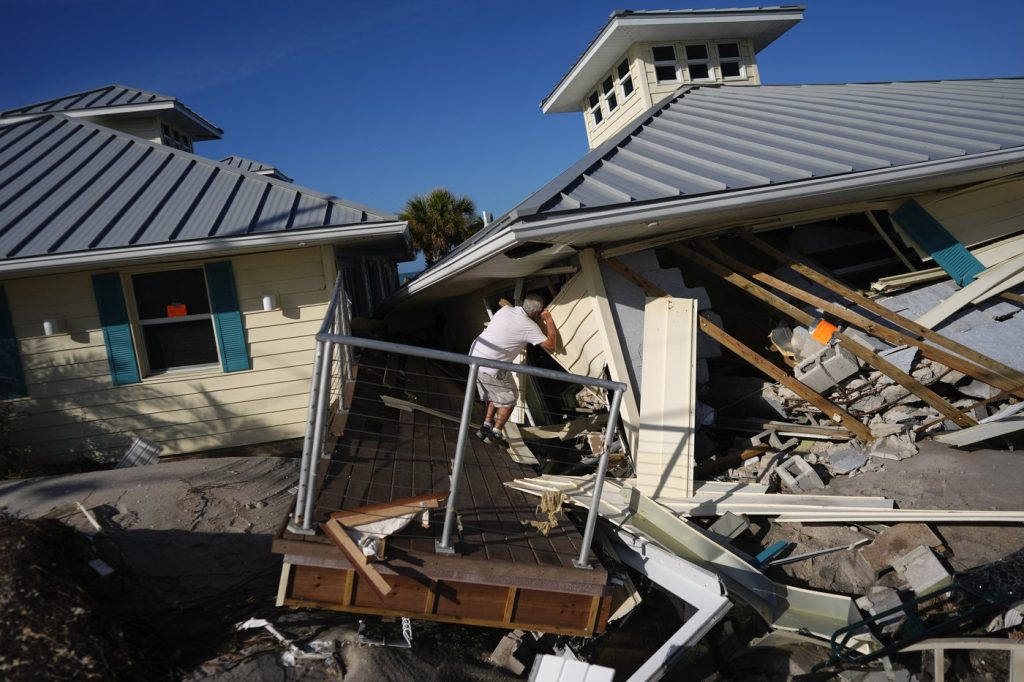WASHINGTON (AP) — Federal disaster aid has become a salient issue as about 94% of Americans reside in counties that have received Federal Emergency Management Agency (FEMA) assistance for disasters since 2011. Following Hurricane Helene last year and the recent California wildfires, discussions have emerged regarding the potential shift of disaster response responsibilities to state governments, including the possibility of eliminating FEMA or reducing federal financial support. This has raised concerns among experts regarding state capacities to manage such disasters independently.
Craig Fugate, a former county emergency manager in Florida and the head of FEMA under President Barack Obama, emphasized that most states lack the resources necessary to effectively handle significant disasters without federal assistance. Susan Cutter, director of the Hazards Vulnerability & Resilience Institute at the University of South Carolina, echoed this sentiment, stating that states would face severe challenges managing disasters on their own without federal funds.
Every state has received millions of dollars in federal support, and analysis indicates a slight trend where Republican states receive marginally more funds than Democratic states. New York University’s Rebuild By Design created an atlas of 795 non-medical and non-technological federal disasters since 2011, highlighting that nearly every state and most counties have received assistance, underscoring that climate-related challenges transcend political affiliations.
Since 2011, over $68.2 billion in FEMA aid has been allocated to various disasters, excluding pandemic-related expenses. This figure only accounts for government payments, with additional funds provided primarily through the Department of Housing and Urban Development to assist individuals in recovery. The Associated Press's analysis reveals that states led by Republican governors or those with two Republican senators have experienced a higher frequency of disasters, receiving slightly more federal aid per capita compared to those with Democratic leadership.
Specifically, states governed by Republicans have received an average of $222 per person in FEMA aid since 2011, compared to an average of $193 per person for states with Democratic governors, which reflects a 15% decrease. Interestingly, swing states that supported Joe Biden in 2020 but also backed Donald Trump in 2024 receive significantly lower federal aid per capita, averaging just $35 per person. These swing states, despite comprising 15% of the U.S. population, account for only 2.5% of FEMA aid distribution.
Furthermore, data indicates that states that voted for Trump in 2024 received approximately 15% less FEMA funding per capita than those that voted for Kamala Harris, a discrepancy mainly driven by the aforementioned swing states. Red states constitute 42.7% of the population but account for 56.6% of federally declared disasters, receiving about half of the available FEMA aid. In contrast, blue states, which make up 42.2% of the population and report 35.8% of the disasters, receive 47.5% of FEMA funds.
Fugate termed certain disaster-prone states as his “frequent fliers,” indicating that about two-thirds of the top 15 states in terms of total FEMA funding, spending per capita, and declared disasters lean Republican. Additionally, among twelve congressional districts reporting at least a dozen federally declared disasters since 2011, three-quarters are Republican-led. According to Cutter, disaster declarations have become less politically charged compared to 30 or 40 years ago.
The process for securing disaster aid begins when a state requests the federal government to declare a disaster, enabling the flow of funds. In typical circumstances, the federal government covers 75% of the disaster costs, with states and localities bearing the remaining 25%. However, for particularly severe disasters, this state contribution can decrease to as low as 10%. Quick intervention from FEMA is critical, as the agency can facilitate initial funding within 30 days, which is essential for state government operations during crises.
FEMA also brings specialized expertise to disaster management. For instance, in California during wildfire events, the removal of substantial debris—often toxic—requires expert handling, and FEMA can effectively collaborate with the U.S. Army Corps of Engineers, streamlining the process for taxpayers. Concerns persist that state governments may struggle to prevent waste and abuse without FEMA's oversight, given the complexities of federal procurement laws.
In conclusion, experts underline the necessity of federal involvement in disaster management, as state capacities are often insufficient to address large-scale emergencies independently.










